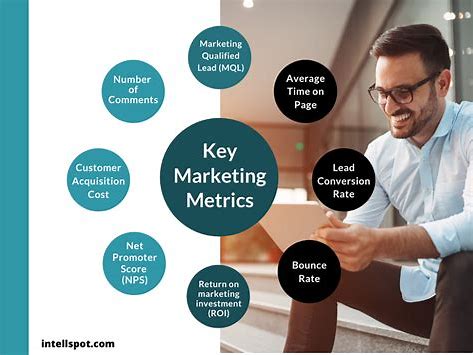
Measuring success in marketing and advertising is crucial to understanding the effectiveness of your strategies and making data-driven decisions. Here are key metrics to track across various aspects of your marketing and advertising efforts:
1. Website Metrics
Traffic Sources: Identify where your visitors are coming from (organic search, direct, referral, social media, etc.) to understand which channels are most effective.
Page Views: Track the number of times pages on your website are viewed to gauge interest in different content.
Bounce Rate: The percentage of visitors who leave your site after viewing only one page. A high bounce rate may indicate that your landing pages need improvement.
Session Duration: Average time users spend on your site. Longer sessions suggest more engaging content.
Conversion Rate: The percentage of visitors who complete a desired action (e.g., making a purchase, signing up for a newsletter). This measures the effectiveness of your site in driving user actions.
2. Social Media Metrics
Engagement Rate: Measures interactions (likes, comments, shares) relative to your total followers or post reach. Higher engagement indicates more effective content.
Follower Growth: Tracks the increase or decrease in your social media followers over time.
Click-Through Rate (CTR): The percentage of people who click on your social media posts or ads relative to the number who view them.
Impressions and Reach: Impressions measure how often your content is shown, while reach indicates the number of unique users who see it.
3. Email Marketing Metrics
Open Rate: The percentage of recipients who open your email. This helps assess the effectiveness of your subject lines.
Click-Through Rate (CTR): The percentage of email recipients who click on links within your email. It indicates the relevance and appeal of your content.
Conversion Rate: The percentage of email recipients who complete the desired action (e.g., making a purchase) after clicking through.
Unsubscribe Rate: The percentage of recipients who opt out of receiving further emails. High rates may indicate issues with your email content or frequency.
4. Paid Advertising Metrics
Cost Per Click (CPC): The amount you pay for each click on your ad. This helps assess the efficiency of your ad spend.
Click-Through Rate (CTR): The percentage of people who click on your ad after seeing it, indicating the effectiveness of your ad copy and visuals.
Cost Per Acquisition (CPA): The cost to acquire a customer or lead. This helps evaluate the return on investment (ROI) for your ad campaigns.
Return on Ad Spend (ROAS): Measures revenue generated for every dollar spent on advertising. It’s crucial for assessing the profitability of your ad campaigns.
5. Content Marketing Metrics
Engagement Metrics: Likes, shares, comments, and time spent on content pages. These metrics indicate how well your content resonates with your audience.
Lead Generation: The number of new leads generated through content marketing efforts. It measures the effectiveness of content in driving potential customers.
Conversion Rate: The percentage of content viewers who take a desired action (e.g., download an eBook, request a demo).
6. Customer Metrics
Customer Lifetime Value (CLV): The total revenue a business can expect from a single customer over their lifetime. It helps in understanding the long-term value of acquiring and retaining customers.
Customer Acquisition Cost (CAC): The cost to acquire a new customer. This metric helps in evaluating the efficiency of your marketing spend.
Net Promoter Score (NPS): Measures customer satisfaction and loyalty by asking how likely customers are to recommend your business to others.
7. Return on Investment (ROI)
ROI: Measures the overall profitability of your marketing investments by comparing the net profit to the cost of the marketing efforts. A positive ROI indicates that your marketing strategies are generating more revenue than they cost.
8. Sales Metrics
Sales Growth: Tracks the increase or decrease in sales over a specific period. This helps evaluate the effectiveness of your marketing and advertising in driving revenue.
Sales Funnel Metrics: Analyzes the stages of the sales funnel (awareness, interest, decision, action) to identify where prospects drop off and optimize your marketing strategies accordingly.
By closely monitoring these metrics, you can gain valuable insights into the effectiveness of your marketing and advertising strategies, identify areas for improvement, and make informed decisions to drive better results.